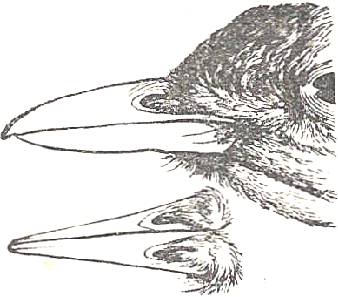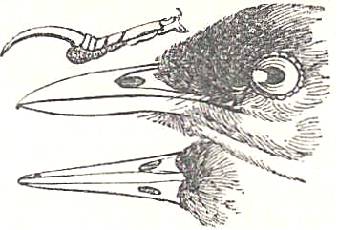
Crateropus

Pellorneum

Criniger
|
By the late 1800s, with the exception of the third
and the last, these forms had become commonly regarded as forming part
of the Family Timeliidae (often, but considered to be less accurately,
written Timaliidae), which no systematist had at that time been
able to define satisfactorily, while many not unjustly regarded it
as a "refuge for the destitute" - thrusting into it a great number of forms,
chiefly Oscinine, which, with a bill resembling a SHRIKE'S, a THRUSH'S,
or a WARBLER'S, mostly possess very short and incurved wings, and could
not, in the opinion of some, be conveniently stowed elsewhere.
Two volumes (vi. and viii.) of the Catalogue
of Birds in the British Museum (The second of these volumes possessing
the interesting character of not assigning an English name to birds which
it was thought would be unlikely to need one) were devoted to this mixed
multitude, which was therein made to include, beside the groups which had
already been assigned to the Family, others more or less well defined,
such as Bower-Birds and MOCKING-BIRDS, with certain Bulbuls and WARBLERS.
These, to say nothing of Water-OUSELS, Hedge-SPARROWS, and some American
forms, are all in separate families in modern 21st Century Taxonomy, whilst
the Babbler remains in its own family - the Timaliidae family.
Babbler Habits and Appearance
The birds today called Babblers, often with a prefix
such as Wren-Babbler, Shrike-Babbler, Tit-Babbler, and so forth, belong
chiefly to the African, Indian and East Asian region. Fluffy-looking
birds with generally short, rounded wings Babblers are not particularly
good fliers. They hop with their long, strong legs in the lower regions
of trees from branch to branch or live on the ground.
Their nutrition consists of insects, berries and
fruits, which they seek in small groups from forest soil or in vegetation
near trees. Whilst seeking food the birds remain constantly in contact
with each other using loud, varied calls which help to bond the co-operation
of the group. The nests are either bowl-like or with a closed back
and a side entrance.
One of the pictures on this page shows a genus
called Pellorneum within the Timaliidae family. The Pellorneum includes
the Puff-throated Babbler (Pellorneum ruficeps), a brown and chestnut bird
with a distinctive habit of puffing out its white throat. Also
found within the 7 species which comprise the Pellorneum genus is the Brown-capped
Babbler (Pellorneum fuscocapillum). This bird is a resident of Sri
Lanks, and is around 16 centimetres long including its lengthy tail. It
enjoys a habitat of thick scrub or forest undergrowth. With a short, dark
colored bill, the bird has and has brown plumage with a dark brown crown
when viewed from above, and rich cinnamon underparts.
|





